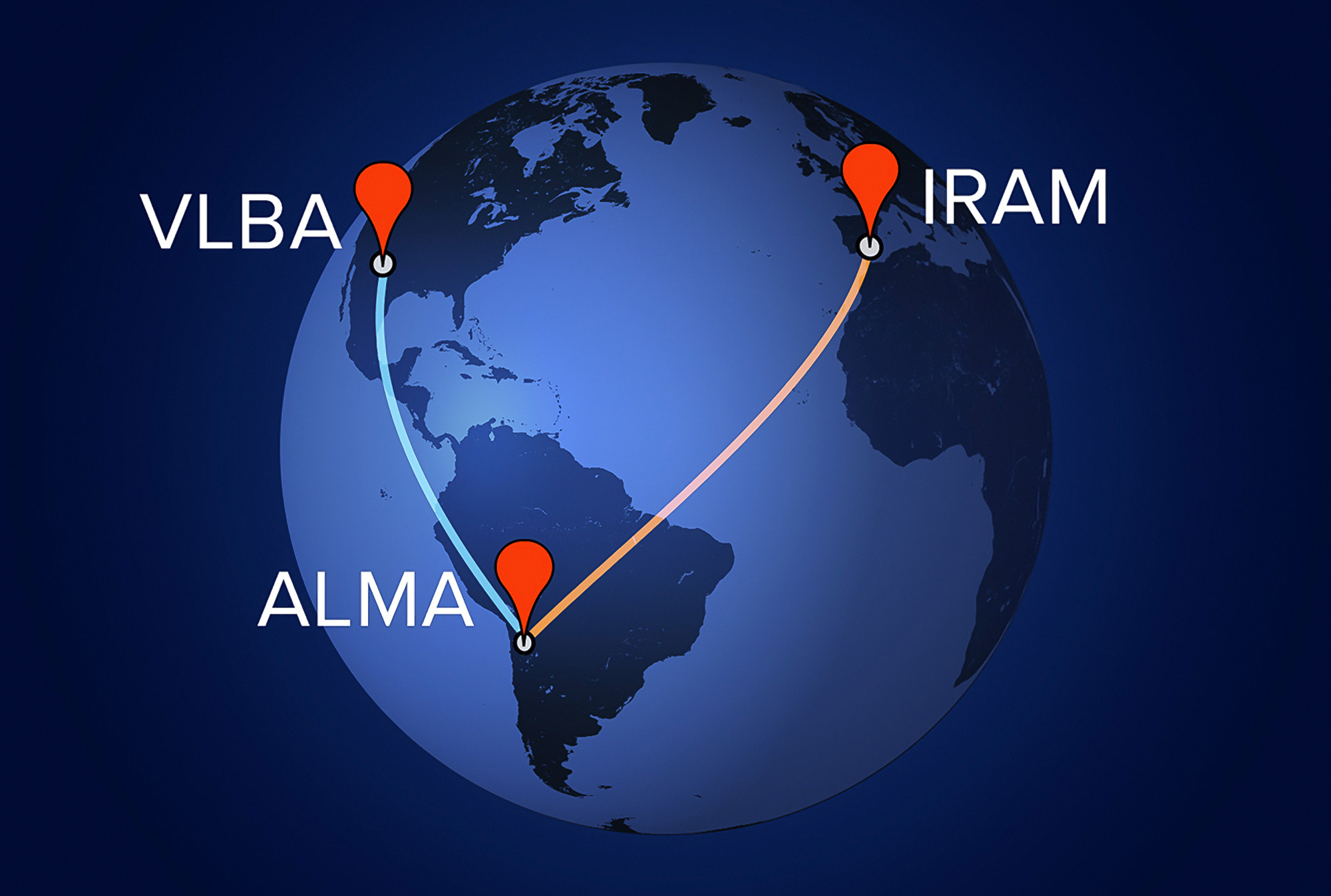News
IRAM and ALMA link to create Earth-size virtual telescope
In a series of recent Very Long Baseline Interferometry (VLBI) observations, ALMA was succesfully linked to the IRAM 30-m antenna (located in the Sierra Nevada of southern Spain) and to NRAO's VLBA antennas in the United States.
 |
| Credit: A. Angelich (NRAO/AUI/NSF) |
In VLBI, data from two or more telescopes are combined to form a single, virtual telescope that spans the geographic distance between them to observe bright, compact astronomical sources. Both the IRAM 30-m and NOEMA observatories have taken part to several such VLBI observations at 3.6-1.3 mm wavelengths during the last decades. The recent deployment of its VLBI capabilities allows ALMA to be phased to form one single dish, which then becomes an element in a much larger VLBI network. This opens the possibility to perform mm-VLBI observations on Earth-size scale at much higher sensitivity.
On 30 March 2015, ALMA and the IRAM 30-m simultaneously observed the bright quasar 3C273, at a frequency of 230 GHz (1.3 mm). Data from this observation were succesfully combined into a single observation with a resolution of 34 microarcseconds. This is equivalent to a separation of less than ten centimetres on the Moon, seen from Earth, or less than half a light-year as seen at the quasar’s distance of 2.5 billion light-years. This marks the very first VLBI observations of ALMA involving trans-continental baselines. These data were first processed at MIT-Haystack in the United States and further post-processing analysis was performed at the Max Planck Institute for Radio Astronomy (MPIfR) in Bonn, Germany.
On 1–3 August 2015, VLBI observing run was also performed with ALMA and six of the NRAO's Very Long Baseline Array (VLBA) antennas, on the bright 3C454.3 quasar at 86 GHz (3.4 mm). These experiments are a further step towards global interferometric observations at mm and sub-mm wavelengths, in the framework of the Global mm-VLBI Array and the Event Horizon Telescope. The addition of ALMA to millimetre VLBI will boost the imaging sensitivity and capabilities of the existing VLBI networks by an order of magnitude. In the near future, the phased 12-antenna NOEMA will provide yet another boost to the mm-VLBI capabilities.
More informations:
Announcement on the ALMA site
Global mm-VLBI Array
Event Horizon Telescope



